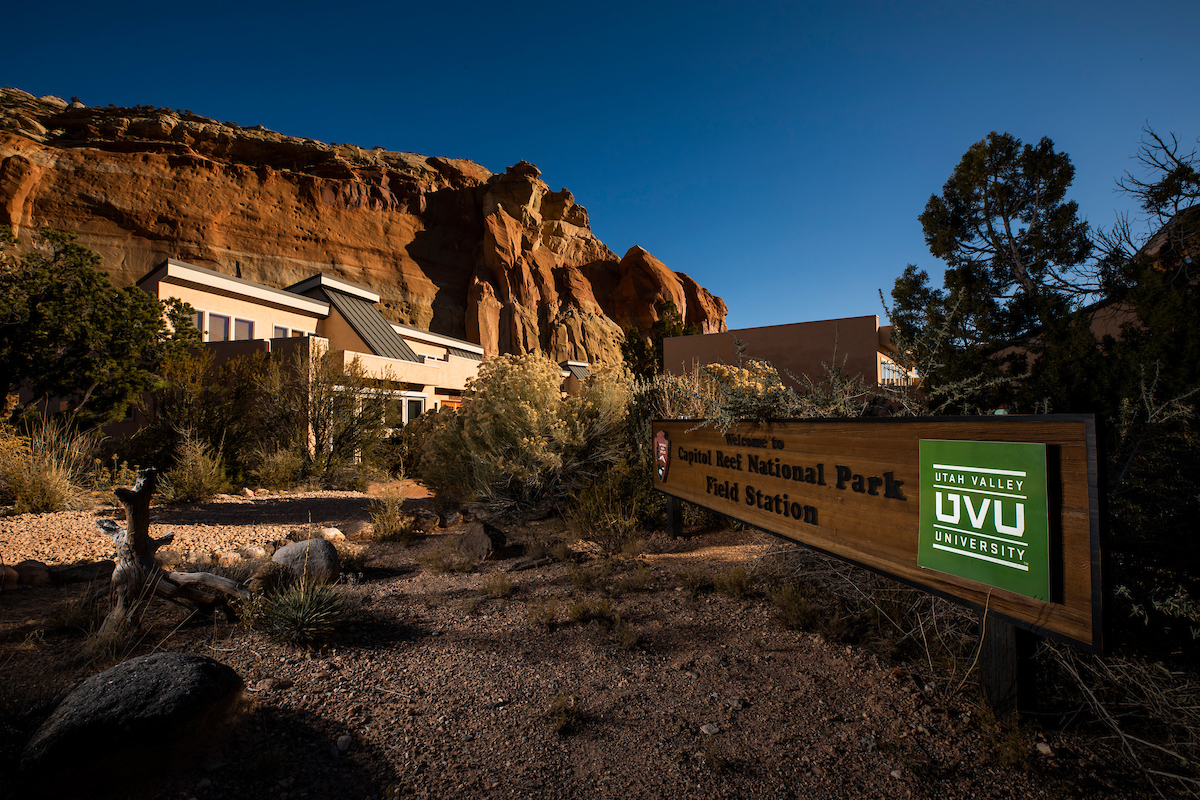

Utah Valley University’s Capitol Reef Field Station has been an effective teaching
and learning center for UVU faculty and students for a decade. Dignitaries, donors,
national park employees and UVU faculty and leaders, including President Astrid Tuminez,
gathered there Nov. 9–11, 2018 to celebrate the station’s 10-year anniversary.
The two-day celebration included a musical performance by a student cellist and a
zero-light pollution star viewing experience. Part of the festivities featured a tour
of the field station’s new, soon-to-be-finished classroom building, which will enhance
the station’s ability to support the missions of both Capitol Reef National Park and
UVU.
UVU faculty and students use the facilities to study and do research about geomorphology
(the study of streams), macrolichens (small growing plants that grow on rocks), optical
instruments (cameras, telescopes, etc. that process and analyze light waves), entomology
(study of insects), the ionosphere (study of the earth’s atmosphere containing high
concentration of ions and free electrons that reflect radio waves), environmental
conservation, and other physics and science-based topics.
The field station consists of four solar-powered buildings that overlook Pleasant
Creek. “It’s a great place to demonstrate solar technology and water conservation,”
said Michael Stevens, Ph.D., UVU biology professor and director of the station. “Since
its opening a decade ago, it has served all eight colleges at Utah Valley University.
It’s a stellar and excellent example of engaged learning.”
According to Stevens, more than 500 undergraduates visit the field station every year
and most are surprised by what they find. “They don’t know what to expect upon arrival,”
he said, “but afterwards most express their wonder and gratitude for having had the
opportunity to visit and study there and their pride that “my university has a relationship
with a national park in such a beautiful setting.”
UVU is only one of nine universities in the U.S. that have partnerships for field
stations with national parks. UVU President Astrid Tuminez noted during anniversary
celebration that , “it’s an extraordinary resource for students, and a place of inspiration.”
Originally known as the Sleeping Rainbow Ranch, the Capitol Reef Field Station began
operating on October 16, 2008, thanks to visionary donors and educators. The Capitol
Reef area has been a home to people for thousands of years, including archaic hunters
and gatherers who migrated through the canyons, and the Fremont peoples who lived
in the area from approximately 300 – 1300 C.E.
Explorers, Mormon pioneers, and others arrived in the 1800s, settling in what is now
the Fruita Rural Historic District. They planted and nurtured orchards of apples,
pears, and peaches. The National Park Service oversees the manages the area to keep
the history alive.

